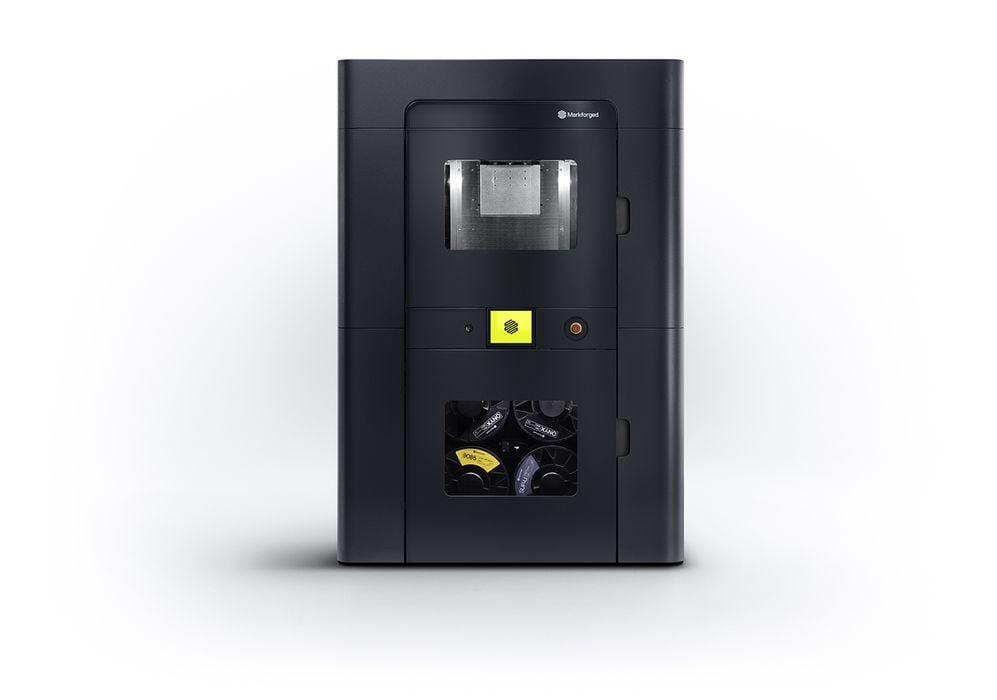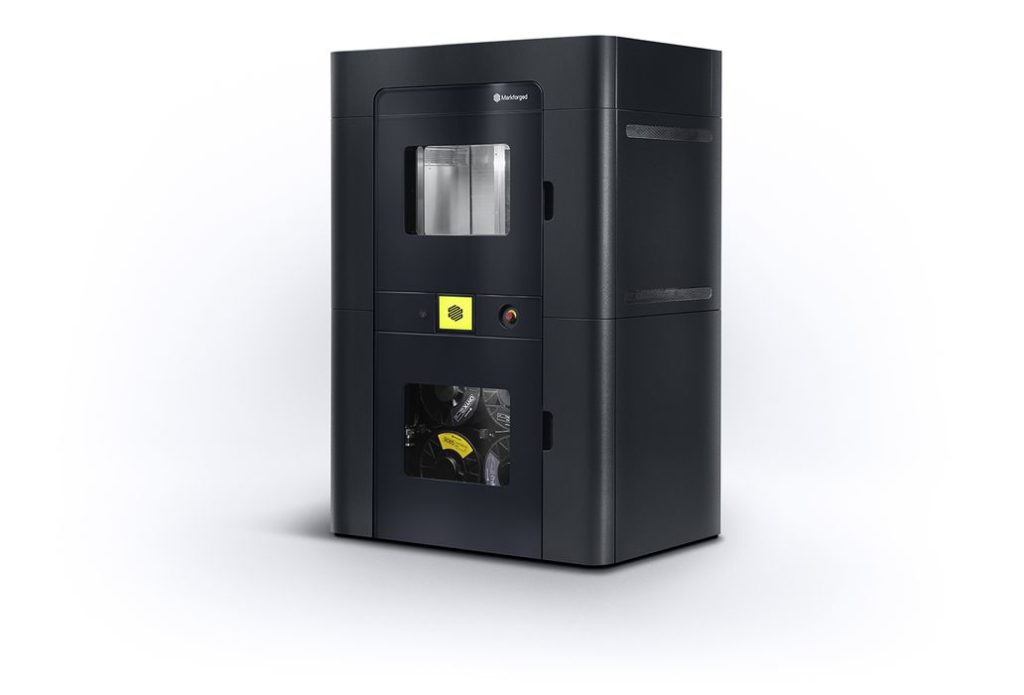
Markforged announced a new 3D printer, the FX20.
The company made its fame by introducing the concept of continuous carbon fiber years ago. The idea was to lay down extremely strong strands of continuous carbon fiber within a polymer 3D print. This carbon fiber very significantly increased the strength of the printed part, while not compromising on part weight.
I should make clear that there is a major difference between “continuous carbon fiber” and “carbon fiber”, which is more widely available. When you see “carbon fiber” in 3D printing, it typically means “chopped carbon fiber”. This is typically a filament composed of a base polymer like nylon, PETG or other thermoplastic, and mixed with short lengths of carbon fiber. The lengths are small enough so that they do not clog up the 0.4mm nozzle on the 3D printer.
Chopped carbon fiber does increase the strength of parts, but vastly less than continuous carbon fiber.
Markforged’s equipment included not only a normal 3D printer toolhead, but a second toolhead designed to spool out long strands of carbon fiber as required for the model. Their software would determine the lengths and layout path for the fibers. I’ve handled some of these “CCF” prints and they are certainly very strong.
The base polymer for the Markforged equipment has been nylon or their own proprietary Onyx material.
Now that is set to change with the announcement of the new FX20 3D printer. Like the others, it can lay down continuous carbon fiber — but the thermoplastic involved is ULTEM 9085.
This unusual material has several properties that make it highly desirable:
- It has extreme heat resistance
- It is very strong
- It is chemically resistant
- It is lightweight
Typically used in the aerospace industry for obvious reasons, it’s one of the best materials you can make 3D prints from.
Except there’s one problem: to 3D print ULTEM, you must heat it beyond it’s very high glass transition temperature. That temperature is well beyond the range of most 3D printers. Another issue is that this heat also generates a massive thermal gradient, and that tends to warp the prints.

The solution is to build a specialized high-temperature 3D printer that can both heat the ULTEM to the required high temperatures in the hot end, and at the same time heat the build chamber high enough to reduce the thermal gradient.
That’s precisely what’s being done in the new FX20 3D printer. It has a very high temperature hot end, and the build chamber can hit an amazing 200C, which should eliminate the possibility of warping.
The FX20 is not a small machine. It’s build volume is truly massive at 525 x 400 x 400 mm, and Markforged said it can print ”up to eight times faster than the default print settings on Markforged’s existing line of composite printers.”
This is a notable development, as it offers the ability to produce high-temperature, chemically resistant, lightweight parts that are now far stronger than plain ULTEM parts. These parts will be much stronger than ULTEM-CF offerings made by other 3D printer manufacturers.
This unique capability will certainly be in demand from Markforged, particularly by the aerospace industry, which always seeks stronger and lighter parts.
Markforged said the FX20 will ship some time in the first half of 2022.
Via Markforged
